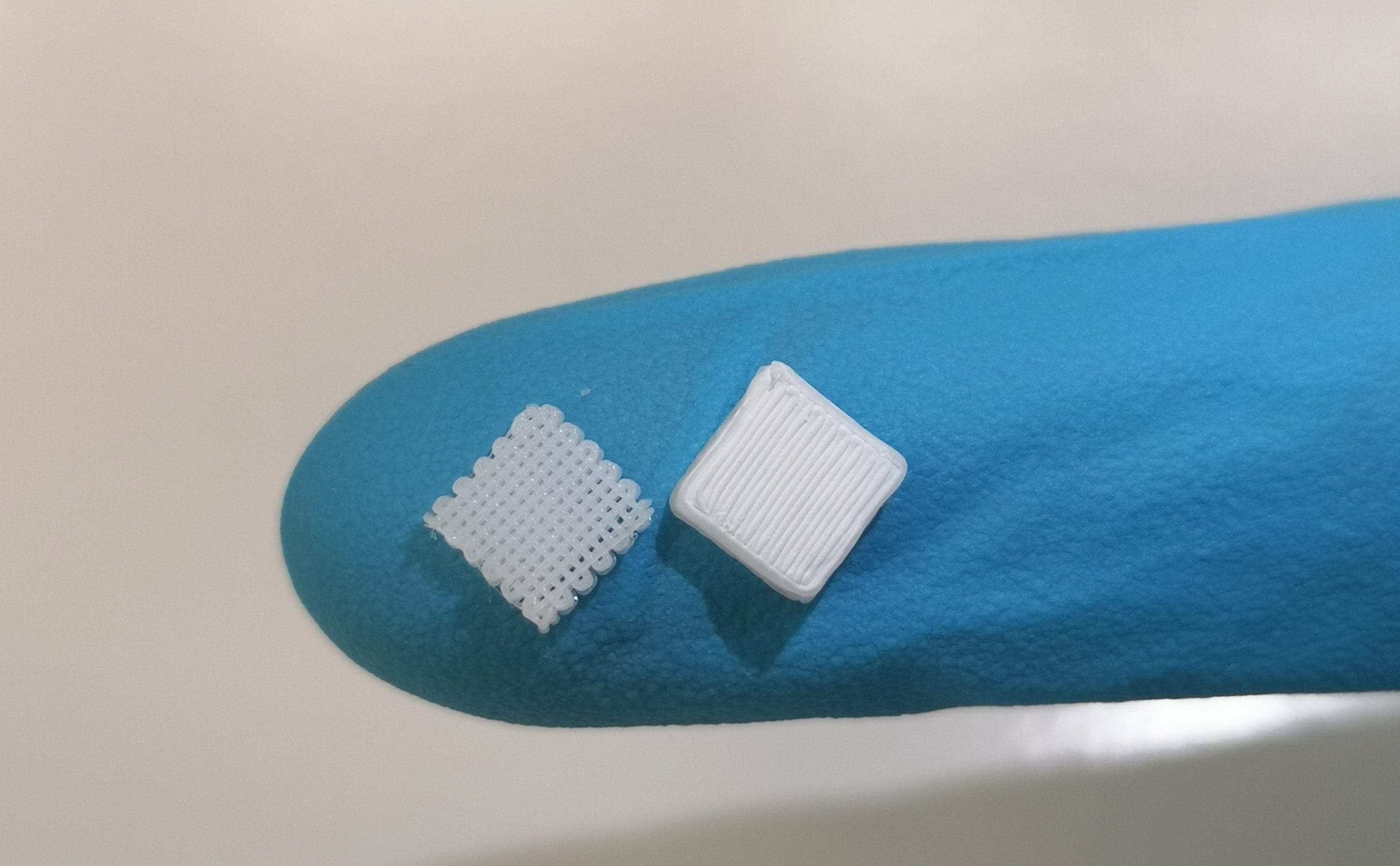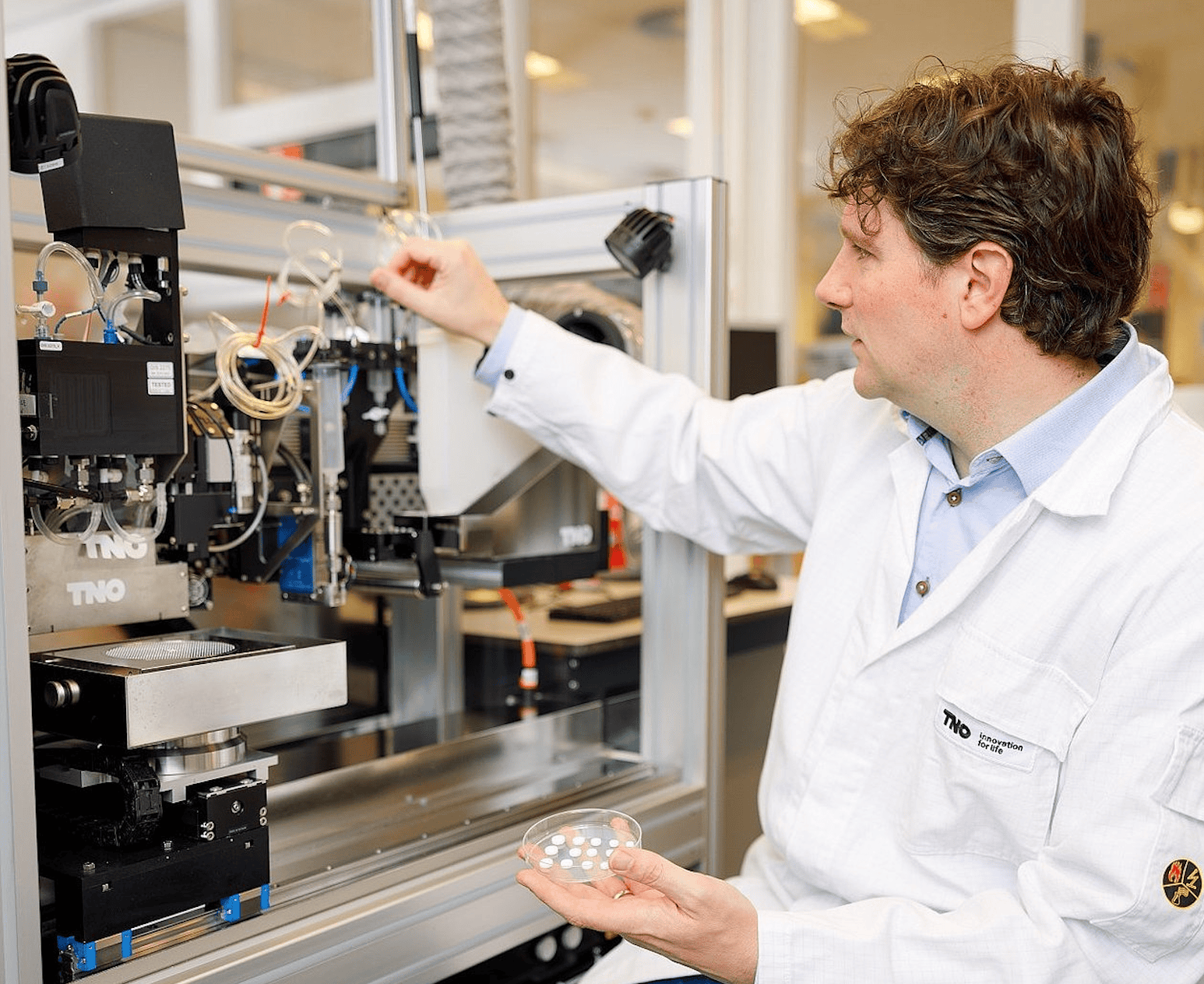
Since the Japanese scientist Hideo Kodama published the pioneering papers on “rapid prototyping” back in 1980, 3D printing has become commonplace and has found its way into many areas of life. Formula 1 teams, for one thing, use this technology to fabricate parts for their racing cars. In prosthetics, it is hard to imagine life without 3D printing. Or even in the manufacture of everything from appliances to automobile and aircraft parts.
Usually, however, 3D printing only uses materials that are turned into liquid by extreme heat, e.g. plastic, metal, or ceramics. These then solidify again after being printed. As a rule, the liquefied parts are usually added afterward. This is both time-consuming and expensive. However, chemists at the Martin Luther University Halle-Wittenberg (MLU) in Germany have now developed a method for integrating liquids into the materials directly into the printing process.
Combination of 3D and conventional printing methods
“The future lies in more complex methods that combine several production steps,” says Prof. Dr. Wolfgang Binder from MLU’s Institute of Chemistry. “That is why we were looking for a way to integrate liquids directly into the material during the printing process.” To do this, scientists use a combination of standard 3D printing processes and traditional printing methods, such as those used in ink or laser printers. They were able to integrate liquids directly and specifically into a material by adding them one drop at a time to where needed.
They have already used two examples to show that their method works. First, they incorporated a liquid agent into a biodegradable material. “We were able to prove that the active ingredient was not affected by the printing process and remained active,” Binder said. In pharmaceuticals, these types of materials would be used as active ingredient repositories that slowly degrade in the body. For instance, they could be used after surgery to prevent inflammation. Production of these materials could be simplified with this new process.
Secondly, the chemists integrated a luminous liquid into a synthetic material. If any damage, such as cracks, occurs in the material, the liquid leaks out. This then signifies that there is damage. “You could imprint something like this into a small part of a product that is exposed to particularly high levels of stress,” Binder says. As an example, he cites heavily stressed areas of cars or aircraft parts. Damage to synthetic materials has been difficult to detect in these. In metals, on the other hand, micro-cracks can be made visible by using X-rays. A liquid integrated in the synthetic material could consequently provide added safety.
A combined method for a variety of applications
Binder also sees the combined process as being suitable for many other areas of application and with his team, he is planning in the near future to use the method to print battery parts. “Larger quantities cannot be produced in the laboratory with our setup,” Binder explains. That is why the method needs to be further developed outside the university so it can produce amounts on an industrial scale.
Binder and his team have published the results of their study in the journal Advanced Materials Technologies. The research was supported by the Systems and Biotechnology High-Performance Center, the Deutsche Forschungsgemeinschaft (DFG, German Research Foundation) as part of the EU Horizon 2020 program.
Title image: Inside the material produced by the new 3D printing method (right) is a lattice framework (left) where liquid droplets can be dispensed. Photo: © Harald Rupp








